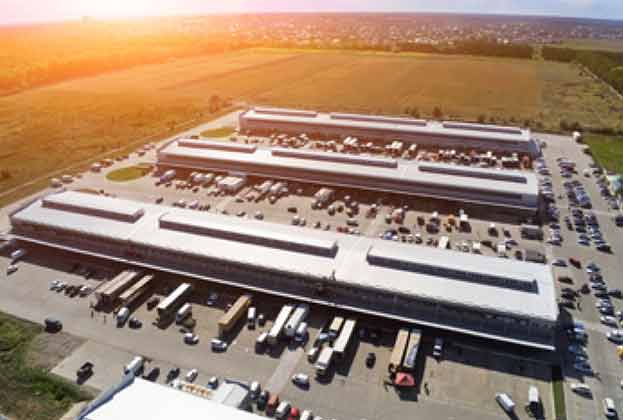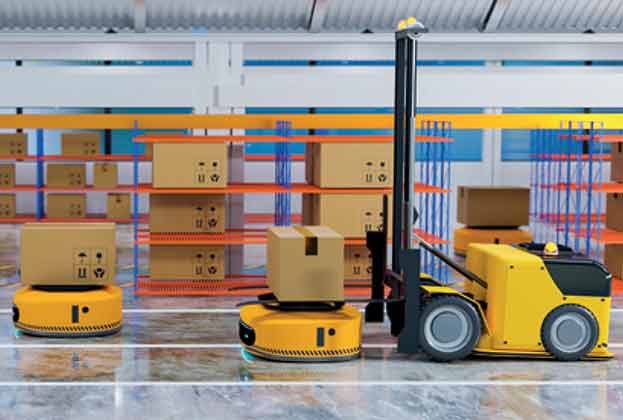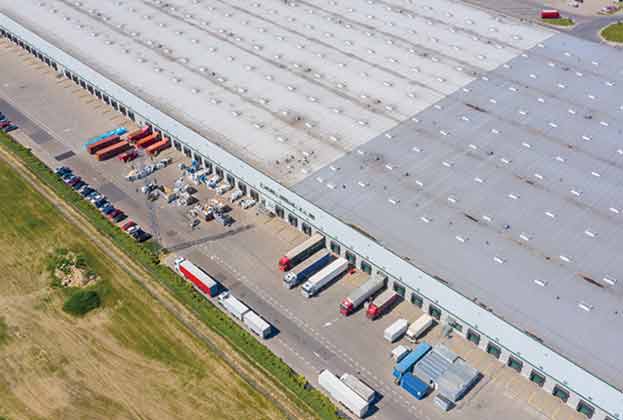The complex equations behind how much different occupiers are able to pay
Complex equations
With demand outstripping supply, what are the factors that need to be considered when looking to take new warehouse space?
Since the onset of the Covid-19 pandemic, significant tailwinds have amplified nearly every metric associated with the logistics property market. Take-up has risen dramatically, and the supply of new buildings has fallen to record low levels, which has caused the vacancy rate to fall to 2.8%, the lowest level ever recorded.
These market conditions have seen occupiers compete for the best space, and as a result, the achieved rental levels have started to rise. Indeed, since February 2022, according to the MSCI monthly index, rental levels have increased by 16% nationwide and 23% in London, and the latest forecasts from Realfor suggest a further 25% of growth will be seen by 2026, at a nationwide level.
Combined with other inflationary pressures, investors are rightly asking whether rental levels are affordable and sustainable. To examine this question, Savills has worked with leading supply chain consultants Hatmill and major UK logistics landlord LondonMetric.
Greater analysis
A key aim of this paper is to provide greater analysis and discussion around the decision-making process, from an occupier perspective, on what factors are considered when companies are looking to take new warehouse space.
Perceived wisdom suggests that landlords can view the affordability of rent through a narrow lens by simply looking at an individual company's turnover and profit and cut their cloth accordingly.
Rent, however, needs to be viewed as a component within a much wider cost base. The location of a warehouse unit, for instance, has the potential to influence costs, which in turn can impact a company's bottom line.
Investors are rightly asking whether rental levels are affordable and sustainable
Kevin Mofid, Head of Logistics & Industrial Research, Commercial Research
In order to examine this further, Hatmill has created a model, using anonymised data from their own consultancy work, which examines the cost base for parcel delivery companies, online retailers and traditional high street retailers. This segment of the market covers over 60% of warehouse take-up in the UK. Whilst manufacturing companies do make up around 15% of occupier demand, these have been excluded from our models as the analysis becomes much more bespoke depending on the type of company considered and the propensity of such companies to prefer freehold property. We have also excluded 3PLs from our analysis as, for the most part, 3PL contacts are awarded on an open book basis, meaning that any cost rises are simply passed on to the awarding retailer or manufacturer.
Sustainable rental levels?
Our work examines the key cost factors occupiers are considering when choosing a new site, why this equation is both complex and constantly changing and what the property market impacts of rising rental levels could be.
The first section of our report looks at the myriad of factors occupiers are considering when searching for new warehouse accommodation. We also pick out which factors are considered to be integral to decision-making.
In the second section, the report takes data from a wide sample of occupiers and highlights that labour and transport make up the bulk of a company's total cost. However, any analysis is always a snapshot in time, meaning that the same analysis undertaken at different times in an economic cycle, or for different geographies, can yield different results.
Lastly, we examine the real estate implications that rising costs across the board have and whether different markets have the potential to react differently.

Moving forward
Given the current inflationary pressures impacting all areas of cost, it is important to stress that rising rental levels need to be seen in a wider context. At this moment in time, costs are rising for transport, energy and labour rates.
From a real estate perspective, this makes the analysis of new locations even more important as any cost savings achieved by choosing a warehouse that may have a cheaper rent will be negated by increased transport costs.
Occupiers in the sector continue to perform well financially, which, in turn, bodes well for the growing areas of the warehouse property market. Indeed, DPD’s parent company Geopost recently reported a 14.8% increase in turnover to €14.7bn and a 25% increase in profit to €1.1bn. Major UK parcel delivery company Hermes (now Evri in the UK) reported a 70% rise in revenues to £1.5bn – an increase in operating margin from 6.2% to 12.1%.
Given the forecast that the growth in online retail, as a proportion of total retail sales, is set to continue, it is expected that operators in this space will be able to maintain their margins. This bodes well for logistics real estate.
As with all things real estate, location is critical, especially at a time of increasing overall costs. Occupiers will view rent affordability on a case-by-case basis in the context of how much throughput can be achieved in any given unit. In densely populated markets, where vacancy remains low and online retail continues to rise, the cost of not locating there would arguably be higher than choosing to serve the market from elsewhere.
Read the articles within Spotlight: The affordability of warehouse rents below.




